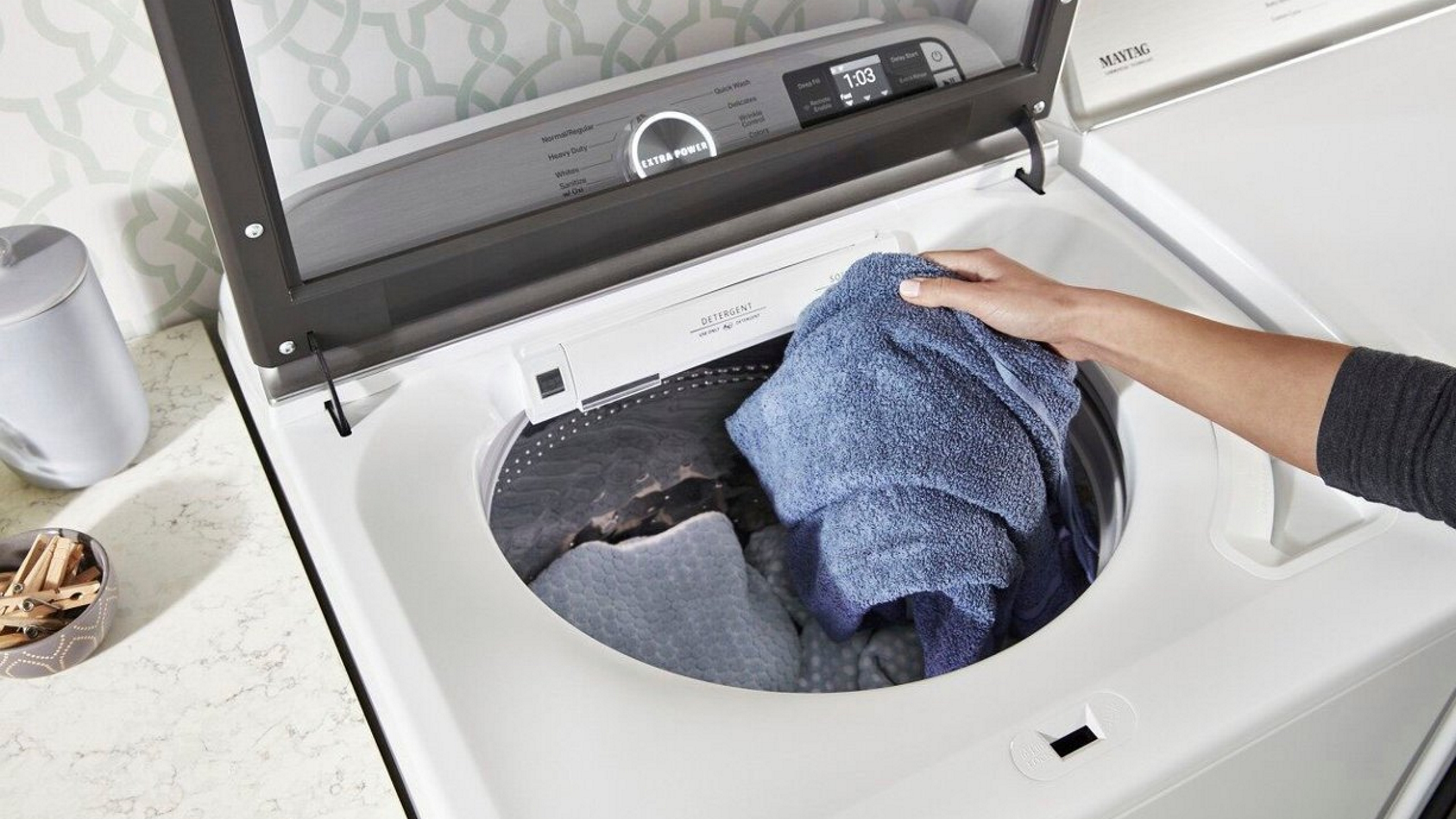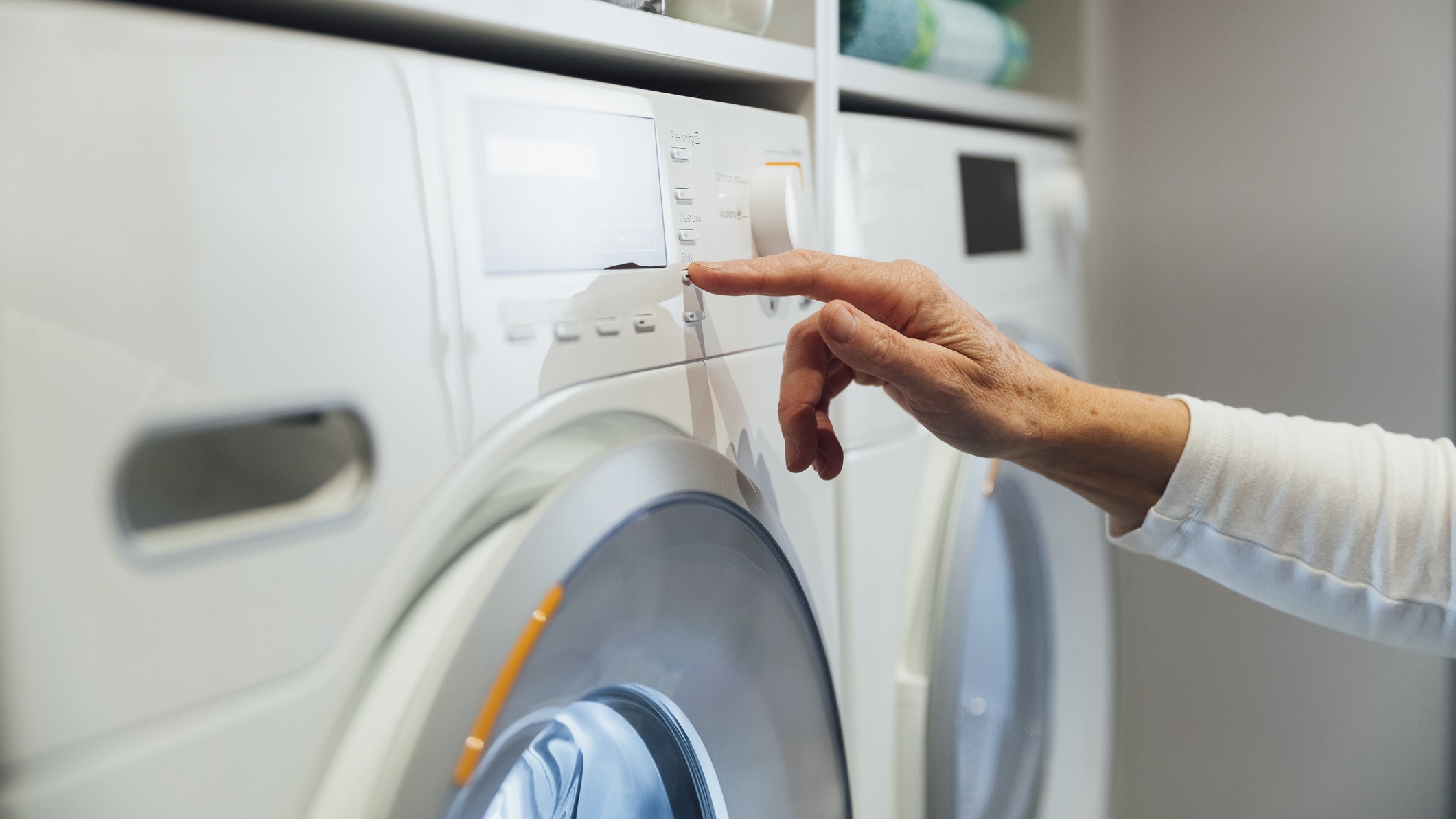Knowing how washing machines work will help us to better understand more about one of the most used major appliances in the household.
If you're a young family it's likely that you have your best washing machine running at least once a day, whereas if you live alone it's going to be running more like once a week. They are undoubtedly a machine that we rely on to keep our laundry clean, but keeping this laundry free from potential damage and keeping the machine in good working order is down to gaining more insight into the mechanics behind it all.
I caught up with several appliance experts to find out exactly how washing machines clean your clothes, where the water goes after it has washed around your garments, and how top-load and front-load washing machines work differently.
How do washing machines work?
In a nutshell, all washing machines will work in the same or very similar way. One of the first experts I caught up with is Glenn Lewis, the president of Mr. Appliance a Neighborly Company, who shared:
"A washing machine combines soap and water and diffuses that soapy water through your clothes. It then rinses the soap out of your clothes and spins the water out, so they are as dry as possible and don’t have to spend as much time in your dryer. The key components are the controls, the basket and outer tub. The pump, motor and clutch and the detergent dispenser and water valves."

Glenn Lewis is president of Mr. Appliance, North America’s leading appliance repair franchise providing customers with full-service residential and light commercial appliance repair. He is responsible for the overall leadership and growth of Mr. Appliance throughout the US and Canada.
Ken Doty, COO and Cleaning Expert at The Maids, dug down a little deeper to explain that while there are a lot of similarities, there are some differences to how the machines operate depending on the model. For example, "Top load washers use agitators, while front load washers use a tumbling approach. Both machines effectively remove dirt and neither is widely considered a better method than the other. Once the wash is complete, the water is drained and fresh water is added to complete the rinse. Each machine will then move at a high spin rate to help eliminate any excess water."

Ken Doty joined The Maids International in July 2013 as Vice President of Business Intelligence and was promoted to Chief Information Officer in February 2020. He is experienced in business intelligence with over 20 years of experience in consulting and information technology.
With this said, let's delve in to how the different types of washers work.
How do top load washers work?
How do the best top load washers wash clothes? There are actually two types of top load washing machines, these are impeller and agitator designs.
The top load agitator designs are traditional and date back over sixty years. When the machine door is opened, you can see the long agitator column in the middle of the drum. How it works is that when a cycle is on, the agitator rotates back and forth during the wash cycle. The agitator rotates back and forth, causing the clothes to move up and down in the water and detergent solution. This motion helps to agitate the clothes and remove dirt and stains.
On the other hand, a top load impeller washing machine is a newer form of top loader—these washing machines don’t feature an agitator. Instead, they have an impeller at the bottom of the machine to move the clothes back and forth, cleaning them. Ocean Van, owner of Coco laundry, says:
"This gentle motion helps remove dirt and stains from clothes without causing damage to the fabrics. The cleaning action in impeller washing machines is achieved by the combination of water and detergent circulated around the drum by the impeller’s motion. The impeller’s rotation creates a constant movement of the clothes, which helps to agitate the dirt and stains, making removing them easier. The gentle tumbling action also helps to prevent clothes from tangling and getting twisted."

My name is Ocean Van, owner of Coco Laundry, a laundry service provider in Long Beach, CA. I have much experience dealing with making clothes, garments and linen smell good, as requested by both residential and commercial (especially hospitality) customers. We provide laundry services that handle thousands of pounds of laundry per month.
Usually, a top loader washing machine has two drums: an outer drum that has holes in it to drain the water and an inner drum. It also has an electric motor and a rubber belt.
When the washer is turned on, water is added to the vertically aligned drum via pipes at the top of the machine before washing through the detergent tray and flushing out the detergent into the drum.
When it comes to the washing process, top loader washing machines require access to both hot and cold taps. These machines don’t tend to heat their own water, so access to a hot water supply is crucial if you plan on doing hot washes. In order to wash clothing effectively, top loader machines with an agitator use a large amount of water, as in order to clean the clothes, each item needs to submerge in water.
The agitator or impeller moves around, washing the clothes, while the drum remains stationary.
How it works is that the agitator or impeller is powered by the motor, which is attached to the rubber belt. When the washer is on, the motor is used to turn the drum. Then, once the wash has finished, a pump drains the water from the drum.

How do front load washers work?
The best front load washers offer a great alternative to top-load machines; they use around one-quarter of the water and energy that top-load washers tend to use, and they’re designed to handle larger items, such as bedding and blankets, for instance. Front-load machines are also gentle on clothing, and they tend to be quieter than top-load models. However, one of the downsides of these machines is the fact that the cycles often run for longer time periods.
Front load washers have an outer drum that’s fixed and remains stationary and an inner drum that rotates when in use; the inner drum has small holes around the edge for drainage. Both drums are fitted to a horizontal axis. Strong springs are used to hold the outer drum in place against the frame—when the clothes spin in the inner drum, they make the outer drum shake, and the springs absorb the vibrations to prevent damage.
Van adds: "They also have a larger capacity, making them great for larger families or those who like to do laundry less frequently."
When in use, hot and cold water enters the machine via the detergent tray, washing the detergent into the drum. The inner drum moves back and forth, with the paddles inside the drum helping to move the clothes through the water. The inner drum is powered by a motor and a rubber belt that’s attached to it.
Front-load washing machines have a heating element that heats the water, so a connection to a hot water supply is not needed.
Once a wash cycle is complete, a pump removes the water, with the water emptying down the tube and into the drain.

How does a washer dryer combo work?
The best washer dryer combos can be a great way to save space by combining a washing machine and a tumble dryer together.
There are two types of washer-dryers to choose from—vented and ventless designs. Ventless washer-dryer designs are ideal for use in utility rooms where there’s no window to place the vent near. A vented washer dryer tends to work like a regular front loader washer and a regular dryer combined. How it works is that the machine spins the clothes to wash them, then continues to spin to remove excess water and aid the drying process. This is then followed by the drying system, which heats up, taking air from the room it's in and using that air to dry the clothing.

The only difference between a vented and a ventless drying system is how the drying process works—on a ventless machine, a condensing drying system is used, which works similarly to a dehumidifier, drying the clothes with the system pulling moisture out of the clothes as the chamber is heated.
A washer-dryer usually has a drum—which works like a normal front loader washer, a filter, and a condenser; the filter is in place to catch fluff that comes off of clothing while they’re being dried, and the condenser cools the moist, warm air inside the machine, creating water that is poured away down the drain.
Washer dryers are usually sealed systems and are a form of condenser dryers. Normal tumble dryers pump hot, wet air into the laundry, creating a drum full of steam, drying the clothes. Whereas washer dryers are condenser dryers—they capture the moisture from clothing, pushing hot, dry air through the washing, removing moisture, followed by cooling the air in a heat exchanger to condense any moisture. This moisture is then either stored in a tank or drained away.
Lewis comments: "It’s (washer dryer combos) are perfect for small spaces where you can't fit both a washer and a dryer. However, the drying process in these machines, often using a ventless system, can take longer compared to traditional dryers. They're convenient, but might not dry large loads as efficiently as separate units."

